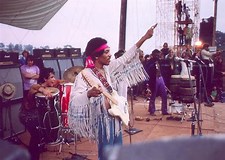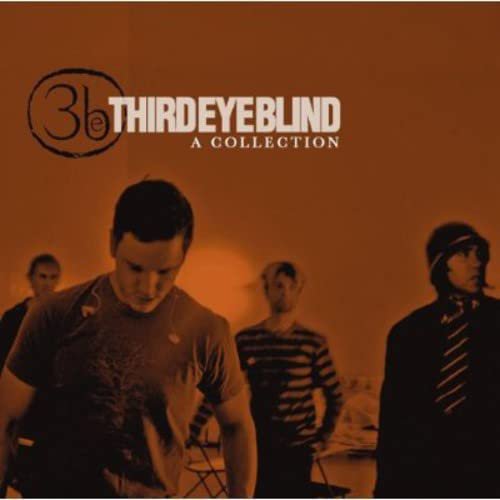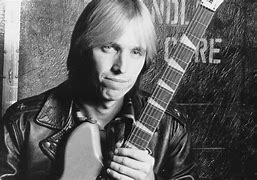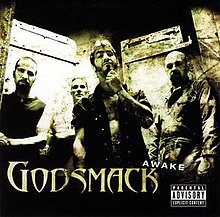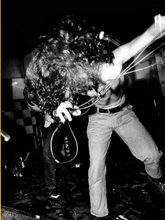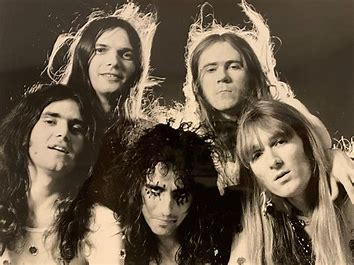Jimi Hendrix
James Marshall Hendrix was born in Seattle, dropped out of high school, joined the Army (rather than go to prison for riding in a stolen car) and was discharged about a year later. Stories circulated for years on why (and how) Hendrix got his Army hitch shortened. He likely was a disinterested, sub-par soldier that was of little use to the Army.
Already an accomplished guitarist, Hendrix re-invented how to play the instrument. He began working in various touring bands, including the Isley Brothers, Curtis Knight and Little Richard, where he was allegedly fired for diverting too much attention from the star.
While playing in New York under the name Jimmy James he was “discovered” by The Animals’ bassist Chas Chandler. Chandler was about to leave The Animals and go into artist management (where the money was).
Call it beginner’s luck, Chandler uncovered a powerful force. He shipped Jimi to England and held auditions for band members. Noel Redding (bass) and Mitch Mitchell (drums) were hired and The Jimi Hendrix Experience was born. Their debut LP, “Are You Experienced?,” released in ’67, had the raw opening track “Purple Haze.” “Fire,” “Manic Depression” and “Foxey Lady” were other highlights. The songs featured psychedelic lyrics (“‘cuse me while I kiss the sky”) and Jimi’s intoxicating yet precise guitar.
Purple Haze
Fire
“Axis Bold As Love,” the second LP followed, with “Bold As Love,” “You Got Me Floatin’,” and “Spanish Castle Magic.” The original Spanish Castle was a Seattle area teen club.
The pinnacle for The Experience was the third, double album, “Electric Ladyland.” “Crosstown Traffic,” “Burning The Midnight Lamp” and “House Burnin’ Down” contained dazzling guitar expositions along with Jimi’s most confident and expressive vocals. But the set reached its pinnacle with the epic “Voodoo Chile (Slight Return), an extended jam that amply displayed Hendrix’s virtuosity and the brilliant cover of Bob Dylan’s “All Along The Watchtower, a non-descript song that Hendrix turned it into a classic blending acoustic and electric guitars and providing just the right amount of vocal swagger.
Crosstown Traffic
All Along The Watchtower
It was Hendrix’s only U.S. Top 40 hit, peaking at #20.
The album featured contributions from Steve Winwood and Chris Wood from Traffic and Jefferson Airplane’s bassist Jack Casady. Casady’s participation caused Redding to get bent out of shape. He soon left to start his own group, which went nowhere.
Mitchell stayed a bit longer but Hendrix eventually lined up Billy Cox (bass) and Buddy Miles (drums) for the less than stellar, Band Of Gypsys.
Voodoo Chile (Slight Return)
A New Year’s Eve show (’69) recorded at the Fillmore East and some rehearsals for that show is all that remains.
The Star Spangled Banner
Jimi’s playing was looser with a more Soul oriented approach as he attempted to expand his horizons. While there were some good tracks, the group’s chemistry failed to gel.
As the highest paid performer at Woodstock ($125,000), he closed the show after playing an epic version of “The Star Spangled Banner.”
Hendrix was working on his solo “Cry Of Love” when he died from a barbiturate OD.
Hendrix is often lumped with fellow ’60s icons Janis Joplin and Jim Morrison. All three checked out in the early ’70s from drug related causes, though only Joplin’s death was officially listed as an overdose.
.
All were 27 when they died and became what’s known the “27 Club” which also included Brian Jones (Rolling Stones) and later Kurt Cobain (Nirvana).
While both Joplin and Morrison appeared at the end of their tether when they escaped the mortal world. Jimi’s career had any real future. His life reads like a half-finished novel. If only there was more… Actually, there was – tons. But it wasn’t what everyone was hoping for.
Following Jimi’s death there was the meandering documentary film “Rainbow Bridge” with an accompanying soundtrack that included “Dolly Dagger.” That should have been the end of it. But it wasn’t.
Concert footage, demos, outtakes, alternate takes, bootlegs, pre-fame recordings as a backing musician (notably with King Curtis) and even Hendrix vocal and guitar tracks with new backing musicians, rolled out in a constant stream. But the keepers of the Hendrix legacy, especially producer Alan Douglas, saw there was a money to be made from these scraps. Cashing in seemed to be the mode of operation. After a long legal battle, the Hendrix family was able to gain control of the recordings.
Hendrix ‘returned’ in ’10 with “Valleys Of Neptune,” a 12-track collection of previously unreleased or rarely heard tunes, including some of his last recording sessions – but the album spanned sessions from ‘68 – ’70. Aside from the title track, the album contained studio covers of Elmore James’ “Bleeding Heart” and Cream’s “Sunshine of Your Love.” Live versions of both tracks had been available for years.
###
